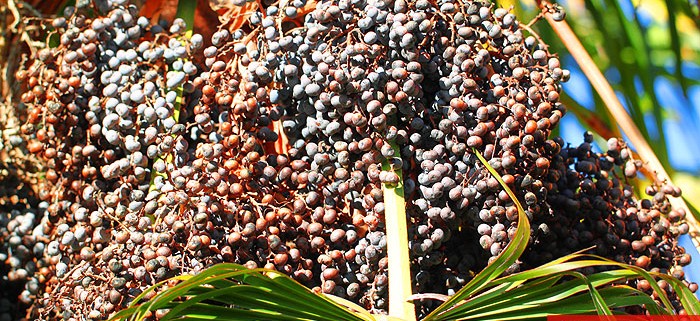Palm Oil: Helpful or Harmful?
The disputes about palm oil have taken a serious turn.
Opposing views confuse the public. When people see food cooked with palm oil, they do not know what its effect on health will be.
We see that palm oil is widespread in the food industry. It remains unclear what nutritional value it has and what effect it produces on health.
In fact, there is some confusion in the debate on the health effects of palm oil. On the one hand, there are those who demonize it due to the high content of saturated fatty acids that are considered unhealthy. On the other hand, many people claim that this oil is useful and rich in vitamins and antioxidants. Confusion stems from the fact that it is not always clear what kind of palm oil we speak about: crude virgin oil or refined palm oil.
The high content of vitamins and antioxidants is observed in the whole crude virgin palm oil. This is red palm oil. It is the best one. Red palm oil contains vitamin E, coenzyme Q10, vitamin K, alpha-carotene, beta-carotene, lycopene and about 20 other carotenes. In addition to the conventional vitamin E, it contains super powerful form of vitamin E, known as tocotrienol. This vitamin form is 60 times more powerful.
Another oil, which is often confused with palm oil, is palm kernel oil. Palm oil is obtained from the fleshy part of the oil palm fruit. Palm kernel oil is obtained from the seeds of the fruit. These two oils differ from each other. Palm kernel oil is similar in its composition to the coconut. However, its amount reaches only 10% of the total amount of oil, and it is basically used in cosmetics. It is expensive.
The food industry uses cheap refined palm oil. After refining, palm oil generally loses all nutrients. Therefore, those who speak of its benefits are either ill-informed or deliberately disingenuous.
Palm oil consists of 50% of saturated fatty acids (particularly, palmitic acid) and 50% of unsaturated fatty acids: in particular, oleic acid and linoleic acid. The high content of saturated fat makes palm oil interesting for the industry because it has a certain density at room temperature.
The problem is that saturated fatty acids are dangerous for the cardio-vascular system. Clinical trials of palm oil often give conflicting results. Some studies have evaluated the effect of palm oil in its entirety, while others were evaluated as if it consisted exclusively of palmitic acid. In addition, many studies have treated saturated fatty acids as a homogenous group, but it is not so. Various fatty acids have different effects on health. Also, these effects depend on the overall balance between saturated and unsaturated fats in the diet. If this balance is adequate, polyunsaturated fatty acids can compensate for the negative effect of saturated fats.
The real danger to the health of the heart and arteries is caused by trans fats which are formed during the manufacturing process of hydrogenation that is expected to harden vegetable oils. Since palm oil is semisolid in nature, it is not subjected to this process. Palm oil is certainly better than trans-fats.
Well, can we use palm oil then?
Not exactly, and the reasons are various.
- It may contain the toxic substances used during its cultivation. Palm oil comes from the areas where DDT is still used. There is always a risk of accumulating these toxins, especially in children.
- The risk is in production processes, which increase the danger of palm oil. We’re talking about transesterification here. This is a chemical process that allows changing fatty acid molecules of vegetable oils to affect their physical and chemical properties. Some studies indicate that palm oil may adversely affect the metabolism of fat and hence people’s health after the process of transesterification.
A little palm oil will not cause harm if consumed with a variety of balanced nutrition. If eaten in considerable amounts every day, it can pose risk to the health of the heart. The problem is in its amount and in the fact that we often eat palm oil without knowing it. It is found in industrial mayonnaise, ice cream, breakfast cereals, biscuits, toast, industrial custard, cakes, candy, chocolate, Nutella, even in ready-to-eat foods and bakery products. Even the cream, which you add to coffee, contains palm fat. In short, palm oil is found in many products that we buy in supermarkets. There is definitely too much of it.
The consumption of products with palm oil should be limited to no more than once per day. It is important to keep in mind that if you take one product with palm oil for breakfast, you run out of the limit for the rest of the day.
The food industry must make its contribution and try to minimize the amount of palm oil in products.
Since December 2014, European legislation requires indicating the content of palm oil by itself and not simply writing “vegetable fat” on the label. But even if you see the words “vegetable fat”, it should alert you, because in 90% of cases it is palm oil.









